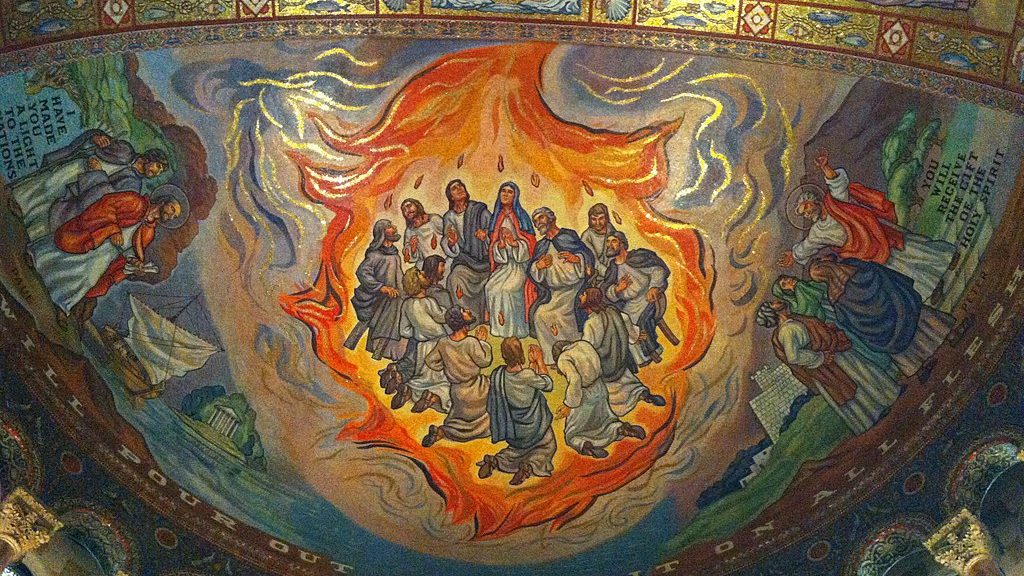A Sermon by the Rev. Dr. Arthur M. Suggs
Preached on the Second Sunday after Pentecost, June 3, 2018
A Gothic Cathedral Spurs Psalm, “Better Is a Day in Your Courts Than a Thousand Elsewhere”
There is an official Congregational Meeting after church today.
Is it appropriate to spend $100,000 of the church’s money, which by the way is actually your money, to redo the entrance off the parking lot?
Well, I might not be the sharpest tool in the shed, but there is no way I’m going to answer that question.
However, I do want to talk about church buildings, at least a little. As a matter of fact, it was a sanctuary that was my first clue that I was destined to be a religious person. It was at my parents’ church, and I was of kindergarten-age.
Prior to the worship service there was an adult discussion group that met fifty minutes or so for the previous hour, and my parents would plant me in the sanctuary — no baby sitter, no supervision necessary. I would just sit there in the pew and look around, sort of soak it all in. I remember it to this day, and I loved it.
Nowadays, whenever visiting a new city, I have an urge to go to one of the local churches to check it out.
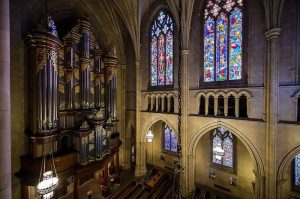
Once when I went to visit our kids in the Raleigh-Durham area, I went to Duke University to visit the chapel there, a gothic cathedral, huge, gorgeous, impressive, and I had to see it in person. That little line from Psalm 84 came to mind. “Better is a day in your courts than a thousand elsewhere.”
I’ve always felt that way, with one exception — a day in the courts is roughly equal to a day in nature, sitting by a stream. But then those days in nature might be God’s courts as well.
Why Are Sanctuaries so Beloved? Why Are They Built so Magnificently?
Look at them: the huge spaces, the stained glass, the woodwork.
Why do we spend so much effort and money to erect places of worship?
Churches, temples, cathedrals, synagogues, mosques, ashrams — all of them, I would suggest, do something symbolic for the soul. That is, they connect heaven and earth because you can walk right in at ground level.
You can feel the functional foundation, built ever so securely, often out of stone. And the way they are built, with spire and vaulted ceiling, draws your eye upward. You can’t help it. They’re rooted in the earth, but with spire and ceiling, you feel the connection between heaven and earth.
On the communion table, you will see a bronze candlestick there with a white taper in it. It comes from my personal altar in my living room, and it’s something I’m fond of, not only because it’s old but also because of its symbolism.
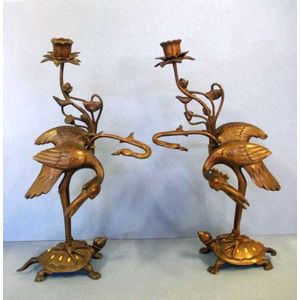
Even though my candlestick is only about a hundred years old, it is modeled after a pair of candlesticks of the same style and appearance from a Zen monastery in Japan from the Fourteenth Century. It has two turtles on the bottom, a mother and a tiny turtle right beside it, and on the back of the larger turtle is a crane and in the beak of the crane is a lotus flower.
The symbolism of the candlestick is exactly the same as the symbolism of a sanctuary, which connects heaven and earth. The turtle has its feet in the mud and its head in the air. The crane has its feet in the mud and its head in the air. The lotus flower has its roots in the mud and the flower up in the air. In each case, putting them together is designed to remind the viewer there’s a connection, they’re linked.
Two Core Symbolisms of a Ladder: Connections Between High/Low, Incremental Rungs for Ascension.
This brings us finally to the scripture for today — the story of Jacob’s Ladder.
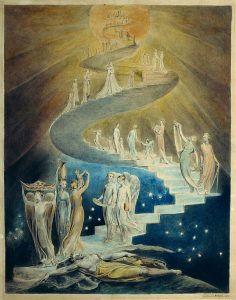
(As an aside, I will be glad when we can move on to a different scripture passage at some point. “We . . . . are . . . . climbing . . . . Jacob’s . . . Ladder” is an unbelievably slow song because he had a long dream.)
Rather than applying exegetical techniques to this passage, I would actually like to apply dream symbolism to it. So Jacob fell asleep, and he had a dream about this ladder with angels ascending and descending on it.
For dream symbolism, you never want to get fancy because you don’t want to get nuanced, you don’t want to get complex about it. It’s straightforward; here’s what it means.
What is the symbolism of a ladder?
It connects something high up, out of reach from where you are, planted on the ground. You’ve got a leaky roof, and there you are, standing on the ground, looking up at it. It’s the ladder that is the connection between the high and the low, between the out-of-reach and what’s at hand.
But ladders actually have two core symbolisms: One is the connection between the high and the low; the other one is that there are rungs on the ladder to ascend. There are increments, one at a time as you rise.
There’s a phrase, “He’s climbing the corporate ladder,” meaning he’s got a job. What’s the next job? And when he gets that one, what’s the next job after that?
Take one or both of those symbolisms — connecting the high and the low, or the rungs for the incremental steps. Take those and look at life from the point of view of Jacob, or better yet, look at it from your point of view, your life.
Here you are, sitting in a church pew, inside a sanctuary, and in the back of your mind are your problems, the things that are always there, cooking around in your mind as well as in your heart.
Then, because your issues overpower the sermon, you nod off and fall asleep for a while. But then you wake up with a sense of assurance, a sense of joy that heaven and earth are connected, that all your worries are understood by the divine, and you have access to the power that heaven and earth are connected. And as if that weren’t enough, you realize that the actual place where you’re sitting is the connection between heaven and earth. You’re back to a spot where they’re connected, and you knew it not!
An Archetype for Everyone: Build a Memorial to the House of God and the Gate of Heaven.
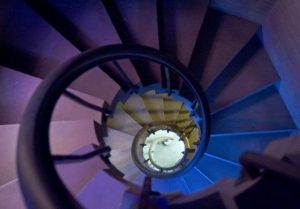
So you build a memorial, and you name the place Bethel — House of God. And you exclaim to everyone that this is none other than the House of God and the Gate of Heaven.
Do you perceive the way this story is an archetype for everyone’s story? The way it applies to each and every one of you in your individual circumstances — feet on the ground, soul linked to God, and you knew it not.
Churches are our memorial. Churches are our Bethel, the House of God and the Gate of Heaven. And sometimes we just don’t know it. Sometimes we forget.
(Read the full sermon for excluded text. Link below.)
Putting on the Mind of Christ Awakens Us to God & Humanity, Spirit & Flesh Already Connected.
Embracing Christ-consciousness, putting on the mind of Christ wakes us up aware of what already is. And what already is, is that heaven and earth, God and humanity, Spirit and flesh are already connected, already linked, Spirit infusing all materiality existing within spirit.
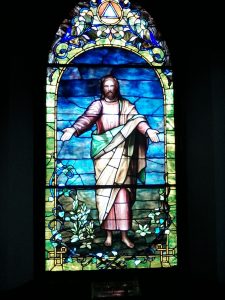
Until the day we awaken to the fact; until the day we incorporate that gospel truth into our souls; until that day, we will read Jacob’s story and try to incorporate the symbolism into our lives, let it sink in; until that day, we will place candlesticks with turtles and cranes and lotus flowers upon our altars.
And until that day, we will build churches and cathedrals with towering spires and vaulted ceilings to remind us because for now, we need reminders. As a rule, we know it not, but we are waking up.
Amen.
View or Download full The Gate of Heaven sermon.
Featured Image Credit: Mosaic of Pentecost in the Cathedral Basilica of Saint Louis. Photo by Pete Unseth. CC-SSA, Wikimedia.

